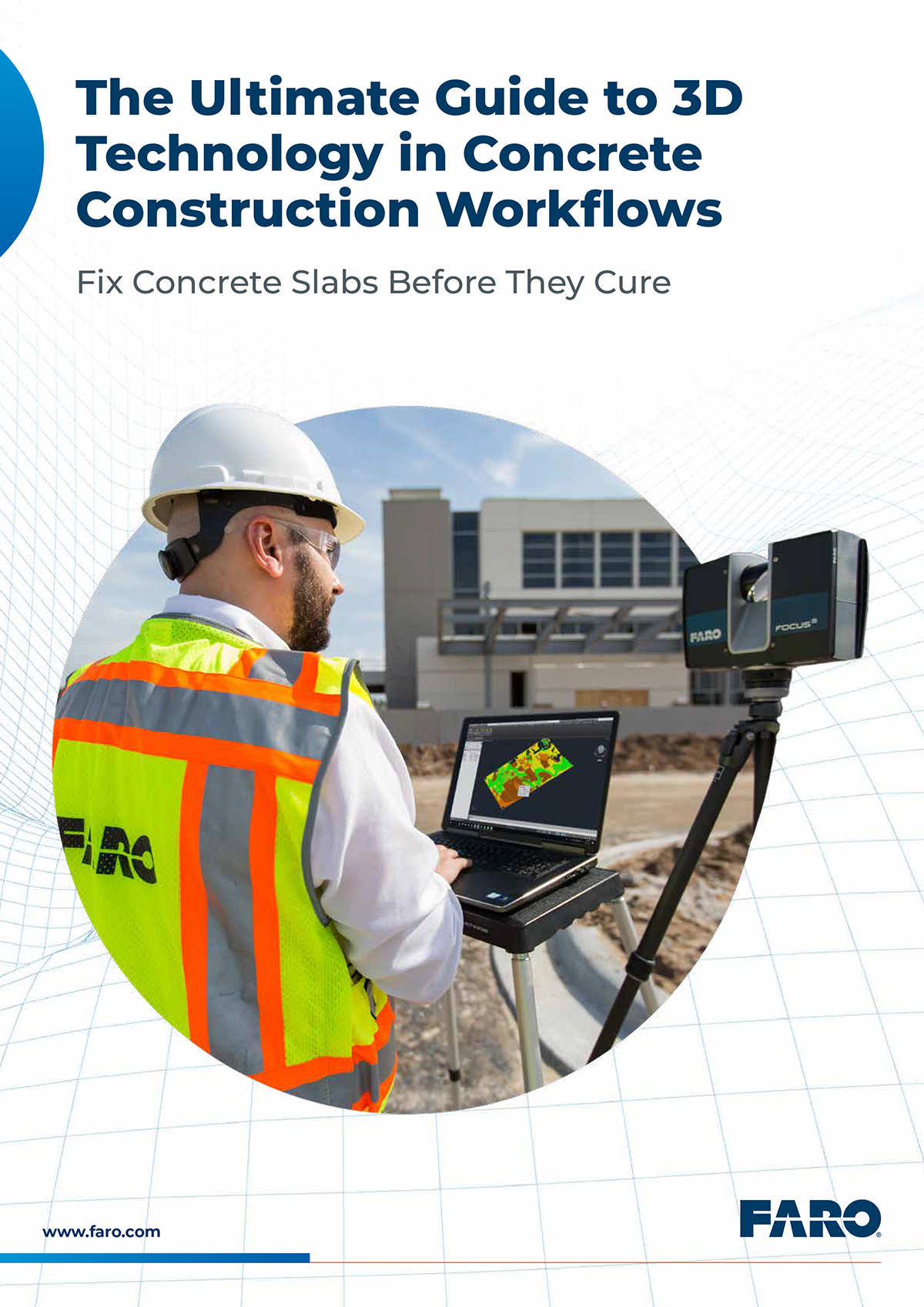This ebook from imaging, measurement and realisation technology specialist Faro offers the ultimate guide to using 3D technology in concrete construction workflows
For many years, concrete contractors had to bring in third parties to validate the accuracy of their pours. However, advances in technology mean 3D laser scanning now allows them to identify high or low points on a concrete slab within minutes of it being poured or screeded – and in many cases, correct those areas while the concrete is still workable.
This means faster quality verification, less time spent on site, project costs are kept to a minimum and the contractor has images and documentation proving that the slab complies with FF/FL standards.
The ebook offers a step-by-step walkthrough of the application of 3D reality capture technology on concrete workflows using the Faro Focus Laser Scanner and BuildIT Construction Software.
Step one starts just before the initial pour, when the scan team can determine where, and how many time, they will need to scan the slab.
Creating a high-definition 3D model
Then the scan is performed, and repeated as often as needed to ensure sufficient coverage of the pour slab, though typically only one scan is needed.
Once the scanning is complete, the reality capture data is compiled and imported into the software to create a high-definition 3D model that can be analysed in detail.
This allows operators to easily identify – with pinpoint accuracy – any dips or swells in the slab, which the finishing crew can then patch up while the concrete is still workable.
This ultimately saves time – as much as 24 to 48 hours – and money, as well as reducing waste and means post-slab construction work can begin earlier.
With technology rewriting how concrete floors are finished, it is easy to see why 3D data capture is becoming an increasingly common practice in the industry.



